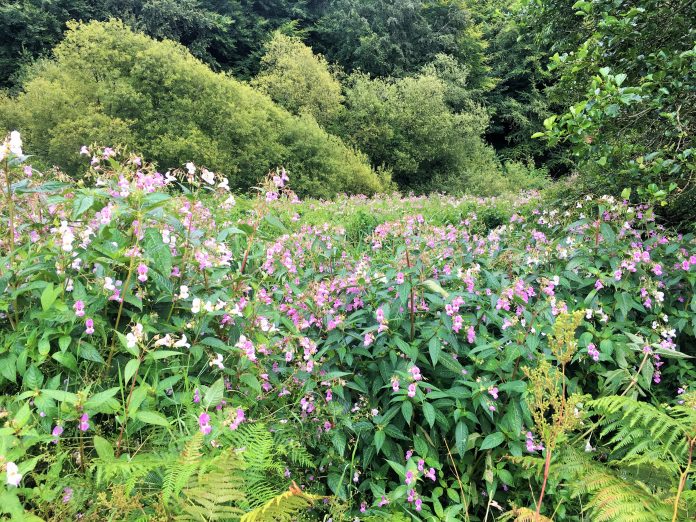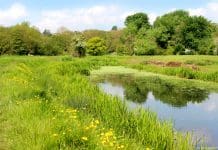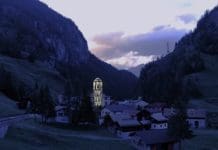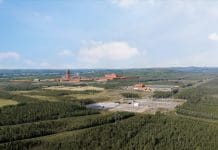Dr Peter Fitzsimons, Invasive Weed Control Group technical manager of national trade body the Property Care Association, explains the importance of being alert to alien plant species at this time of year
While the flowering season has now passed for many native plants across the UK, in this country many non-native invasive plants work to a different timescale.
Late summer is the best time to be on alert to a range of ‘alien’ species, as they become easier to identify once they start flowering at this time of year. Landowners have statutory duties to manage these species, which are all listed under Schedule 9 of the Wildlife and Countryside Act, either for ecological or health and safety reasons or – in the case of Japanese knotweed – due to direct effects on property.
Growth patterns
While many native plants reach maturity, flower and die-back in spring or early summer, the three most common non-native invasive species affecting the UK come to maturity in the late summer season. August and September are the time when Japanese knotweed, Giant hogweed and Himalayan balsam all come in flower.
And while the impact of Japanese knotweed is well documented among landowners and property professionals, there are compelling reasons for the other two invasive weeds to be on their radar too.
Plant facts
Japanese knotweed is rarely out of the spotlight and despite the fact there are clear pathways to manage and control this weed, all too often we encounter situations where homeowners are portrayed as living under siege with the plant.
Since the PCA formed the Invasive Weed Control Group in 2012, we’ve always maintained the position that this plant is not a destroyer of buildings and that it should just be regarded as any other type of property issue.
However, its presence can impact on the ability to gain a mortgage and on the development cost of land.
And we also need to consider that Japanese knotweed is deemed a nuisance by the UK government, and the EU Commission too, and the Court of Appeal ruling against Network Rail in July (2018) means landowners may be able to claim damages if Japanese knotweed encroaches on their property.
As a result, being aware of its presence is vital, and late summer is the point where it is most evident. Giant hogweed is also of concern, for different reasons. The plant’s sap is extremely toxic to the skin in sunlight, making it a danger to public health. Anyone who comes into contact with any part of the plant, and is then exposed to sunlight, can suffer symptoms including severe discomfort and blistering to the skin. We hear of people each summer who are injured by this plant, particularly during the August holidays. In some cases, the blistering can be so severe that urgent medical attention is required.
The matter is made particularly serious as this can become a long-term condition, which can recur over a period of years, with the rash and the itching returning again if skin is exposed to sunlight. As well as the public safety issue, Giant hogweed’s ability to spread far and wide can also really impact on the ecology of an area, as it can cut off the ability of native plants to thrive.
Finally, the third invasive, non-native species of note is Himalayan balsam.
This plant can form dense colonies that shade out and suppress the growth of native plants, reducing biodiversity.
It can outcompete native plants with similar habitat preferences, leave riverbanks exposed to erosion following winter dieback and even create an increased risk of flooding in summer due to constricted water flow, siltation of watercourses and increasing bank instability.
Of further concern is the fact it can attract pollinators away from native species.
Identification
Fortunately, none of these plants are difficult to spot at this time of year as they produce tall, dense strands of vegetation, often excluding other species with their aggressive growth habit.
They also make detection even easier by producing distinctive and ‘showy’ flowers from late July through to September.
Members of the PCA’s Invasive Weed Control Group can assist with identification and treatment strategies to ensure that the issue is managed professionally.
The association can also support property professionals, such as surveyors, to access training and information to ensure they are aware of the key issues, not just in summer, but all year round. Regardless of the time of year, landowners and property professionals need to make informed choices when it comes to identification.
Resources
To support this, the PCA has pulled together expertise from across the sector to produce a definitive guide, which puts invasive non-native weeds, even many less common ones, on the radar.
We produced Practical Management of Invasive Non-Native Weeds In Britain and Ireland to give detailed insight into 38 plant species individually.
The vast majority of the plants featured derive almost exclusively from species listed in Schedule 9 of the Wildlife and Countryside Act and others of concern to the European Union in the EU Invasive Alien Species Regulation 2014.
The 128-page manual acknowledges and builds on guidance provided by organisations including the GB Non-Native Species Secretariat, the Environment Agency, the Scottish Environment Protection Agency, Natural Resources Wales and the Department of the Environment Northern Ireland.
Recently, the PCA has also launched a new initiative to support identification – bringing together live invasive weeds specimens in a controlled environment for training purposes.
Our specially commissioned ‘non-native’ greenhouse is home to 20 plant species and varieties, being put on show as part of our training and development programme.
The greenhouse helps those on our training programmes to accurately identify invasive, non-native weeds in a controlled environment.
By curating these plants in one location, we can accelerate learning regarding weed species. More information and booking details can be found here, while an order form for the Practical Management of Invasive Non-Native Weeds In Britain and Ireland manual can be downloaded here.
Dr Peter Fitzsimons
Technical Manager
Property Care Association
Invasive Weed Control Group
Tel: +44 (0)844 375 4301
pca@property-care.org
www.property-care.org

















